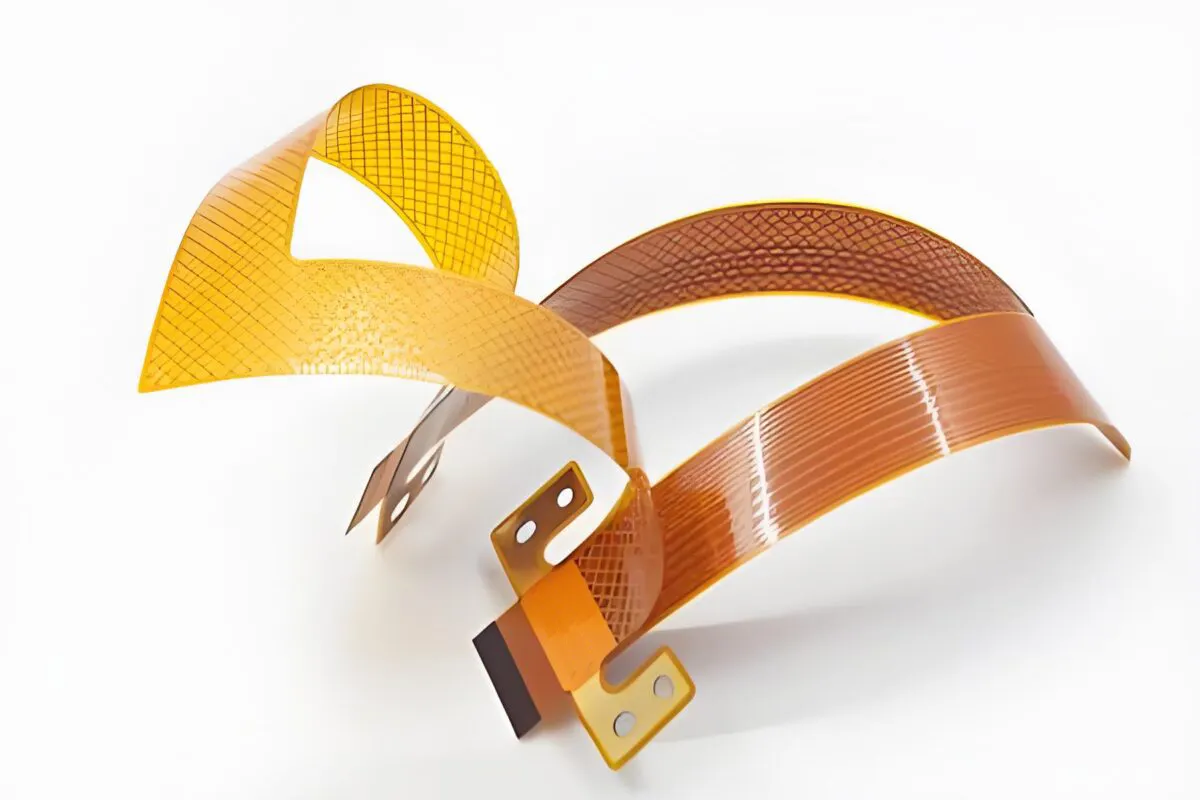Flexible Printed Circuit (FPC)
Flexible Printed Circuit (FPC) or flex PCB are electronic circuit boards, constructed on flexible substrates (like polyester film). FPCs are known for their flexibility, light weight, Flexibility, and fitting in a limited space which is undesirable in traditional rigid printed circuit boards (PCBs) which have no flexibility.

We are a global supplier of flexible circuit boards with excellent quality and delivery speed, embodying the perfect combination of quality and price, which can greatly shorten your product development cycle.
Your satisfaction is our driving force. Click to contact us!

Why Choose Flexible Printed Circuit?
- When the product is very compact and space-constrained.
- When PCBs cannot achieve the necessary connections.
- When the product requires a lightweight design.
- When the product has bending design requirements.
Flexible Printed Circuits are widely used in electronic applications and can be found in many products we use daily.
Advantages of Flexible printed circuit
Flexible printed circuits have several significant advantages over traditional rigid circuit boards.
- Bendability and Flexibility
- Lightweight and Thin Design
- Reliability and Durability
- High Space Utilization
- Weight and Cost Savings
- Reduced Component Connections
- Electromagnetic Interference Suppression
- Rapid Production and Flexible Design
firstly,
Bendability and Flexibility: flexible printed circuits can bend and deform without affecting functionality, making them ideal for flexible applications. They can be customized to fit device shapes, maximizing space in compact devices
Moreover,
Lightweight and Thin: Another great advantage of flexible circuits is their lightweight, thin, and compact design structure allowing them to connect and transmit without adding weight or bulk, leading to lighter, thinner designs.
Furthermore,
Reliability and Durability: Flexible circuits have improved reliability and a longer lifespan, as their specialized materials and manufacturability processes offer higher durability and resistance to time, vibration, and shock.
In summary, if you have flexible circuit design or flexible printed circuit needs, we can help.
Applications for flexible printed circuit
When designing and producing flexible printed circuits, it is crucial to carefully consider key issues to ensure that the final product demonstrates good performance and reliability.
Material selection:
Selecting the correct flexible substrates and conductive materials is essential as it impacts the flexibility, durability, and performance of the circuit board.
Circuit layout:
When designing the circuit layout, consider the flexibility and space usage of the flexible board. A thoughtful layout prevents circuit damage when bent and optimizes board surface area.
Manufacturing processes:
Manufacturing flexible circuit boards involves special techniques different from rigid ones. This includes substrate lamination, conductive material etching or printing, and testing bending performance.
Flexibility:
Bending performance is crucial in flexible circuit board design and production. Factors like bending radius, number of bends, and circuit functionality stability after bending should be considered. Ensuring continuous functionality despite bending is vital.
Reliability:
Since flexible circuit boards are often used in special environments and applications, reliability is crucial. Strict quality control and testing during the production process are necessary to ensure that the flexible circuit board exhibits good stability and durability during use.
The application of flexible circuits in various fields.
In summary, if you have a flexible printed circuit, we can help.
Our Capabilities
In summary, if you have a flexible printed circuit, we can help.
Materials for Flexible Printed Circuit
Copper foil ——refers to the conductive material used in flexible printed circuit boards (FPC), which is usually copper foil. The main function of FPC copper foil is to form the circuit pattern on the substrate of FPC and provide conductive function. Specifically, FPC copper foil is pressed onto the substrate of FPC in the manufacturing process, and then the circuit pattern is formed by chemical etching or laser ablation. After the circuit pattern is formed, FPC copper foil becomes the conductive path in the FPC circuit, allowing the circuit to transmit signals and power.
——————————————————————————————————————————————————————————————-
Polyimide film—— has good mechanical properties and high-temperature resistance, which can withstand the deformation of flexible circuits during use, such as bending, stretching, and twisting. Additionally, it can maintain stability and reliability in high-temperature environments.
——————————————————————————————————————————————————————————————-
PI StiffenerSteel sheet StiffenerFr4 Stiffener—— is used in flexible circuits to enhance their mechanical strength and stability. Specifically, PI StiffenerSteel sheet StiffenerFr4 Stiffener is used as a supporting material for flexible circuits and can be laminated on one or both sides of the circuit board to provide additional support and stability. During the use of flexible circuits, PI Stiffener can reduce the bending and twisting of the circuit board, thereby reducing damage and failure of the circuit. Additionally, PI StiffenerSteel sheet StiffenerFr4 Stiffener can provide additional protection to prevent damage and wear of the circuit board during use.
——————————————————————————————————————————————————————————————-

In summary, if you have a flexible printed circuit, we can help.
Get A Quote
[fusion_form form_post_id=”5445″ hide_on_mobile=”small-visibility,medium-visibility,large-visibility” class=”” id=”” margin_top=”” margin_right=”” margin_bottom=”” margin_left=”” /]














